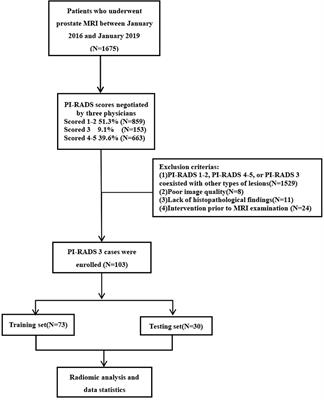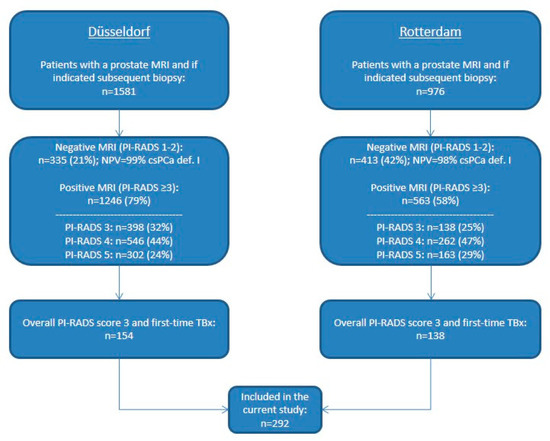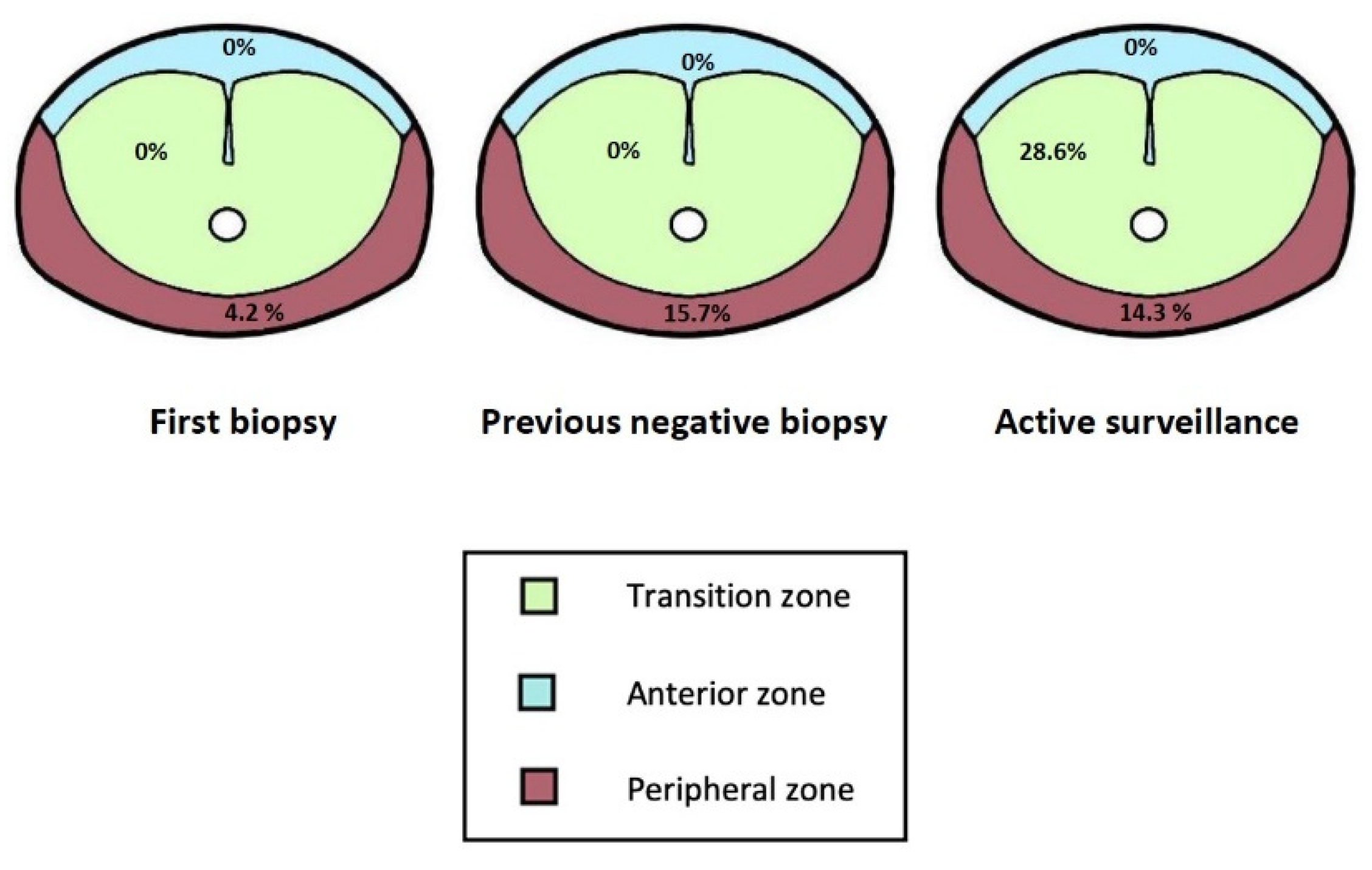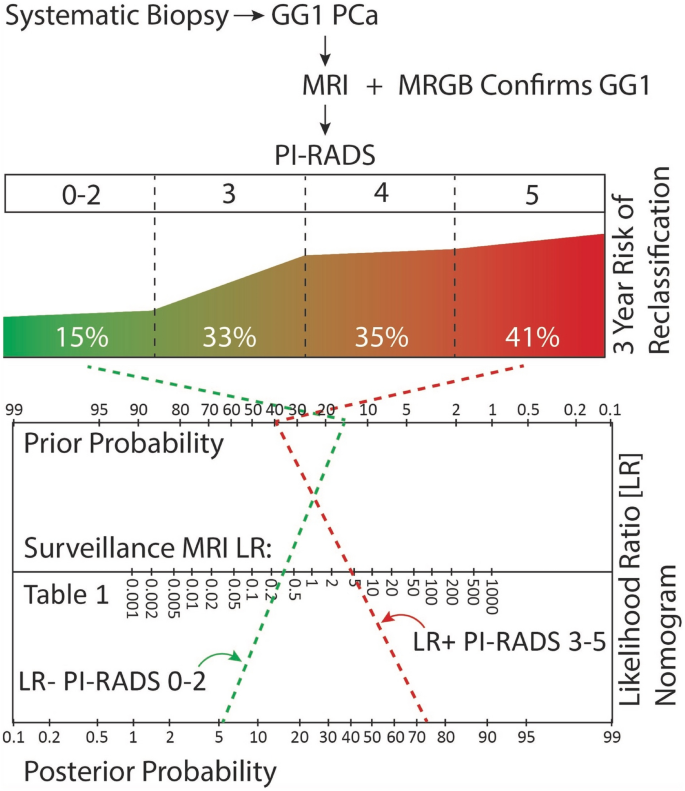pi-rads 4 active surveillance
Active Surveillance no more. Presence of PI-RADS 4 or 5 lesions on men enrolled to AS programs for prostate cancer warrants concern.

Pi Rads Distribution Of A All Men In Active Surveillance With A Download Scientific Diagram
The PI-RADS 4-5 in the PZ were benign in 46 of cases.
. When the followed-up lesion develops into carcinoma the surveillance is discontinued and the urologist actively. Most likely although the far majority of these men were diagnosed on the basis of traditional systematic biopsy sampling this technique apparently. PI-RADS 4 and 5 lesions are being increasing correlated with intermediate and high-grade prostate cancer.
Thus it has to do with interpreting the likelihood of cancer depending on what the images show. I have Gleason 34 in one spot with a Decipher test indicating a 35 chance of metastasis in 5 yrs. The Gleason scale ranges from 1 to 5 where 1 indicates no cancer at all and 5 indicates very aggressive disease.
Most of the current active surveillance criteria published in the literature were based on. Active Surveillance PiRads from 4 to 5. We investigated the utility of multiparametric magnetic resonance imaging mpMRI using Prostate Imaging Reporting and Data System version 2 PI-RADSv2 scoring in patients with prostate cancer eligible for active surveillance AS.
Murphy and Shannon McGrath and Nathan L Lawrentschuk journalBJUI year2016. PI-RADS 4 and 5 lesions are being increasing correlated with intermediate and high-grade prostate cancer. PI-RADS is a rating scale for the likelihood that clinically significant prostate cancer PCa is present.
Active urveilla vce vo. Clinically significant cancer is highly unlikely to be present. However a PI-RADS 3 lesion on.
As recently discussed in. In case the urologist decides for a percutaneous biopsy it is recommended to obtain additional fragments for the above describe areas. Results Overall the PCa detection rate in PI-RADS-4 patients was 62 119193 with DCE and 52 101193 without the inclusion of lesions upgraded on the basis of DCE.
When follow-up is recommended it is termed active surveillance or watchful waiting continuous imaging and biopsies depending on the medical recommendation. Men with PI-RADS 4 or 5 lesions on multiparametric MRI mpMRI are likely to be diagnosed with clinically significant prostate cancer but there is little known about men with a suspicious mpMRI and a negative biopsy. PI-RADS 4 and 5 mandate biopsy as they infer a high risk of cancer.
PCRIs Alex asks questions from our helpline and YouTube comments on the topics of PI-RADS Gleason 347 when the percentage of 4 is less than 10 and acti. PI-RADS 1 almost certainly indicates the absence of prostate cancer very low likelihood PI-RADS 2 image characteristics supports a low likelihood of cancer. As expected less maximal PI-RADS 5 lesions and more PI-RADS 4 lesions were observed in men on active surveillance reflecting smaller lesions in men already diagnosed with low-risk disease.
It is a 5-number system from least likely to most likely. In light of this the presence of PI-RADS 4 or 5 lesions on men enrolled to AS programs. Active Surveillance no more 2 patients with intermediate-risk prostate cancer are not suitable for AS.
Feb 22 2019 524 PM. Active Surveillance is not suitable in intermediate-risk disease. 48 92193 had.
PI-RADS Prostate ImagingReporting and Data System is a structured reporting scheme for multiparametric prostate MRI in the evaluation of suspected prostate cancer in treatment naive prostate glandsThis article reflects version 21 v21 published in 2019 and developed by an internationally representative group involving the American College of. 2127 The authors showed that the absence of a PI-RADS 4 or 5 lesion had a negative predictive value of 96 for the absence of PCa up staging at surgery defined as pathological staging pT3a or. Clinically significant cancer is unlikely to be present.
In that sense PI-RADS is similar but its an interpretation of images not actual cells. The authors identified 88 men who had a negative targeted biopsy with 45 undergoing a follow-up mpMRI. Active Surveillance is not suitable in intermediate-risk disease It is now accepted that AS programs are safe in low-risk prostate cancers with prostate-cancer specific survival of 981 and 943 at 10 and 15-year follow up respectively 3.
Background Active surveillance AS is the recommended treatment option for low-risk prostate cancer PC. The medical records of the patients who had undergone mpMRI before radical prostatectomy from 2014 to. Individuals who had active surveillance strategies with annual MRI yielded the highest QALY of 1619 compared to active surveillance with no MRI 1614 QALY and watchful waiting 1594 QALY.
Patient in active surveillance for prostate cancer with very high probability of clinically significant cancer PI-RADS 5. Active Surveillance PiRads from 4 to 5. PI-RADS is a grading system used to interpret an MRI of the prostate to determine if you have prostate cancer or not.
Surveillance varies in MRI frequency of follow-up and the Prostate Imaging Reporting and Data System PI-RADS score that would repeat biopsy. Disease management has gradually changed to a paradigm that relies on close monitoring through active surveillance in select patients as well as ongoing refinements in treatment interventions including minimally invasive procedures. The strategy with the highest economic value was an annual MRI using a PI-RADS score of at least 4 out of 5 to do a biopsy instead of PI-RADS of at.
Almeida et al reported on 73 patients with low risk PCa defined by the Prostate Cancer Research International. It too is based on a score from 1 to 5. Furthermore in a series of 113 men enrolled in AS a PI-RADS 4 and 5 lesion on MRI correlated with a high risk of AS ineligibility of 45 and 100 respectively 17.
There are grades 1 to 5 often reported as PI-RADS 1 to 5. No accumulation or free fluids within the abdominalpelvis cavity. PI-RADS 4 or more.
Biopsy in lesions with PI-RADS scores of 4 or greater is likely the most cost-effective AS. You cant actually be on active surveillance until you have a diagnosis but you can regularly monitor your PSA. Thus it has to do with interpreting the likelihood of cancer depending on what the images show.
ArticlePerera2016PIRADS4O titlePI-RADS 4 or more. Active Surveillance no more authorMarlon Perera and Nikolas Katelaris and Declan G. 61 mm and 41 mm pi rads 4 prostate cancer treatment diameter axial diameter and anteroposterior diameter.
49 percent for a PI-RADS score of 4 or 5. As recently discussed in. PI-RADS 4 and 5 lesions are being increasing correlated with intermediate and high-grade prostate cancer.
There was no apparent difference between the results when MRIs were carried out using 3 T as compared to 15 T MRI scans and 80 of the scans were carried out using 3 T MRI systems. Diagnosed April 2018 On AS -- Recently PSA went from 898 to 938 10 months and 3tMRI showed no change in lesion size but PiRads went from 4 to 5.

Selecting Patients With Favorable Risk Grade Group 2 Prostate Cancer For Active Surveillance Does Magnetic Resonance Imaging Have A Role Journal Of Urology

Frontiers Utility Of Clinical Radiomic Model To Identify Clinically Significant Prostate Cancer In Biparametric Mri Pi Rads V2 1 Category 3 Lesions Oncology

Overall Cancer Detection Rates By Pirads Score Download Scientific Diagram

A Multivariable Approach Using Magnetic Resonance Imaging To Avoid A Protocol Based Prostate Biopsy In Men On Active Surveillance For Prostate Cancer Data From The International Multicenter Prospective Prias Study European Urology Oncology

Active Surveillance Strategies For Low Grade Prostate Cancer Comparative Benefits And Cost Effectiveness Radiology

Pi Rads Active Surveillance Protocols For 3 3 6 3 4 7 Genomic Genetics Tests Mark Scholz Md Youtube

A Comparison Of Image Guided Targeted Prostate Biopsy Outcomes By Pi Rads Score And Ethnicity In A Diverse Multiethnic Population Journal Of Urology

The Long Term Risks Of Metastases In Men On Active Surveillance For Early Stage Prostate Cancer Journal Of Urology

Association Between Tumor Multifocality On Multi Parametric Mri And Detection Of Clinically Significant Prostate Cancer In Lesions With Prostate Imaging Reporting And Data System Pi Rads Score 4 Urology

Active Surveillance Of Prostate Cancer

Pi Rads Distribution Of A All Men In Active Surveillance With A Download Scientific Diagram

Jpm Free Full Text Equivocal Pi Rads Three Lesions On Prostate Magnetic Resonance Imaging Risk Stratification Strategies To Avoid Mri Targeted Biopsies Html

True Positive Pirads 4 And False Positive Pirads 4 Nodules In Download Scientific Diagram

Diagnostics Free Full Text Does Adding Standard Systematic Biopsy To Targeted Prostate Biopsy In Pi Rads 3 To 5 Lesions Enhance The Detection Of Clinically Significant Prostate Cancer Should All Patients With

Patient Flow Chart For Proposed Pi Rads Mri Directed Biopsy Download Scientific Diagram

Utility Of Multiparametric Magnetic Resonance Imaging With Pi Rads Version 2 In Patients With Prostate Cancer Eligible For Active Surveillance Which Radiologic Characteristics Can Predict Unfavorable Disease Clinical Genitourinary Cancer

Clinically Significant Cancer Detection Rates By Pirads Scores Download Scientific Diagram

The Utility Of Prostate Mri Within Active Surveillance Description Of The Evidence Springerlink